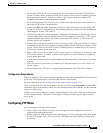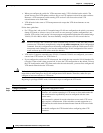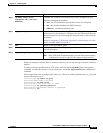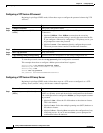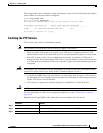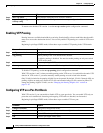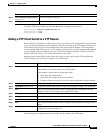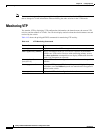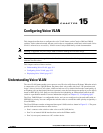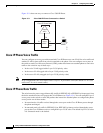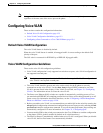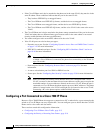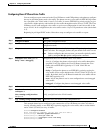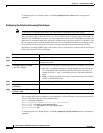
CHAPTER
15-1
Catalyst 2960 and 2960-S Switch Software Configuration Guide
OL-8603-09
15
Configuring Voice VLAN
This chapter describes how to configure the voice VLAN feature on the Catalyst 2960 and 2960-S
switches. Unless otherwise noted, the term switch refers to a standalone switch and a switch stack. Voice
VLAN is referred to as an auxiliary VLAN in some Catalyst 6500 family switch documentation.
Note Stacking is supported only on Catalyst 2960-S switches running the LAN base image.
Note For complete syntax and usage information for the commands used in this chapter, see the command
reference for this release.
This chapter consists of these sections:
• Understanding Voice VLAN, page 15-1
• Configuring Voice VLAN, page 15-3
• Displaying Voice VLAN, page 15-7
Understanding Voice VLAN
The voice VLAN feature enables access ports to carry IP voice traffic from an IP phone. When the switch
is connected to a Cisco 7960 IP Phone, the phone sends voice traffic with Layer 3 IP precedence and
Layer 2 class of service (CoS) values, which are both set to 5 by default. Because the sound quality of
an IP phone call can deteriorate if the data is unevenly sent, the switch supports quality of service (QoS)
based on IEEE 802.1p CoS. QoS uses classification and scheduling to send network traffic from the
switch in a predictable manner. For more information on QoS, see Chapter 33, “Configuring QoS.”
The Cisco 7960 IP Phone is a configurable device, and you can configure it to forward traffic with an
IEEE 802.1p priority. You can configure the switch to trust or override the traffic priority assigned by a
Cisco IP Phone.
The Cisco IP Phone contains an integrated three-port 10/100 switch as shown in Figure 15-1. The ports
provide dedicated connections to these devices:
• Port 1 connects to the switch or other voice-over-IP (VoIP) device.
• Port 2 is an internal 10/100 interface that carries the IP Phone traffic.
• Port 3 (access port) connects to a PC or other device.



